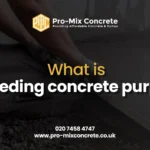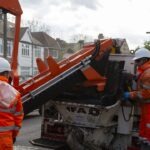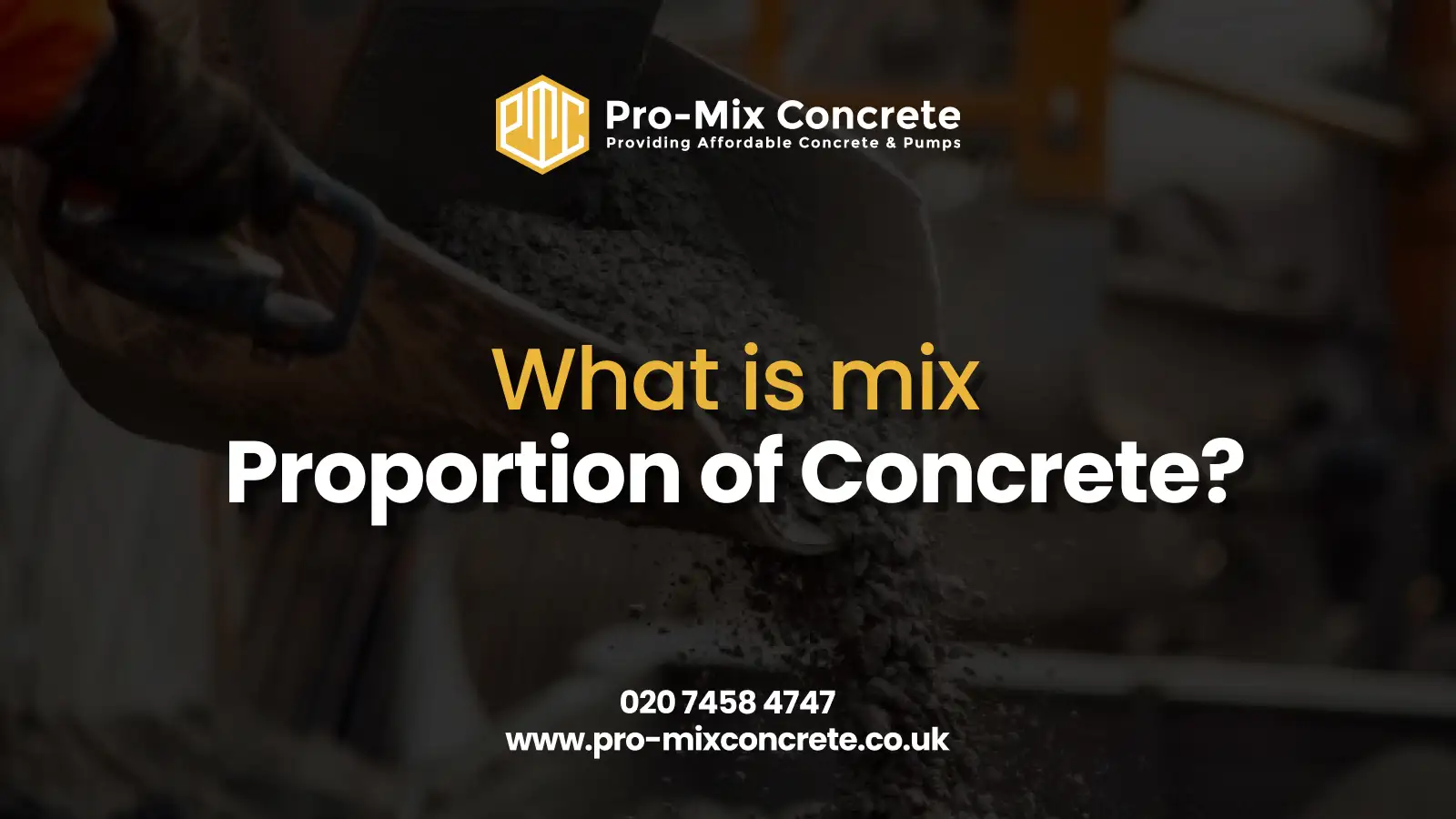Concrete screeding means applying a thin layer of cement mix over a rough concrete slab to create a smooth, flat surface ready for flooring. Think of it as the final smoothing step before installing tiles, hardwood, vinyl, or laminate.
The screeding concrete purpose does more than just level floors. It strengthens the base, protects heating systems underneath, stops cracks from forming, and makes sure your finished floor looks perfect and lasts longer.
What is Concrete Screeding?
Screeding is applying a cement and sand mixture over concrete to get a smooth, level finish. The mix uses cement, sharp sand, and water in ratios like 1:3 or 1:5. Most screed layers sit between 25 to 75 millimetres thick.
Screed differs from concrete in important ways. Concrete has big stones (gravel) mixed in and forms the main structure, usually 100 millimetres thick or more. Screed only uses fine sand and sits on top as a finishing layer at 25 to 75 millimetres. Concrete holds up the building while screed makes the floor smooth.
Screed also differs from mortar. Mortar sticks bricks together and uses soft sand with a wetter consistency. Screed creates floor surfaces, needs sharp sand for strength, and keeps a drier, crumbly texture. Getting these differences right matters. Using the wrong material creates problems that cost thousands to fix later.
Why Screed A Concrete Floor?
Screeding fixes problems that raw concrete creates. It makes uneven floors flat, strengthens weak spots, protects systems underneath, and gives flooring materials the perfect base they need to perform well.
To Create a Flat and Level Surface
Raw concrete comes out bumpy and uneven. High spots, low spots, and surface problems show through finished floors. Tiles crack, laminate feels bouncy, and hardwood gaps appear when the base isn’t flat.
Screeding builds up the low areas and levels everything out. Professional work gets floors flat within 3 millimetres over 3 meters. That’s the precision tiles, hardwood, and vinyl needed.
Why flatness matters:
- Tiles crack on uneven surfaces
- Grout lines look crooked
- Laminate and vinyl move around
- Hardwood develops gaps
- Floors wear out faster in low spots
- Installation takes longer and costs more
A smooth screed layer makes flooring installation easier, faster, and cheaper. The materials perform how they should and last their full lifespan.
To Provide a Strong Base for Floor Finishes
Different floors need different support. Tiles need rigid bases that don’t flex. Hardwood needs dry surfaces. Vinyl needs perfectly smooth foundations without bumps.
Screed gives each flooring type what it needs. The fine texture grabs tile mortar better. The compacted surface resists furniture dents. The cured strength handles foot traffic without wearing down.
What screed does for your floors:
- Creates a better grip for tile adhesive
- Stops floors from flexing under weight
- Resists dents from furniture legs
- Handles heavy foot traffic
- Controls moisture coming up from the concrete
- Protects moisture-sensitive materials like hardwood
Quality screed also blocks moisture rising from the concrete below. This protection keeps hardwood from warping and laminate from swelling. Your floors stay beautiful longer.
To Encapsulate Underfloor Heating or Insulation
Modern homes often have heating pipes or insulation under floors. Screed wraps around these systems, protecting them while spreading heat evenly across room surfaces.
Heating pipes rest on insulation boards above concrete. Screed flows around the pipes, filling gaps and getting rid of air pockets. The screed layer above pipes measures 25 to 40 millimetres, balancing good heat flow with manageable floor height.
Benefits of screeding over heating systems:
- Protects pipes from damage
- Spreads heat evenly with no cold spots
- Stores heat and releases it slowly
- Improves energy efficiency
- Reduces heating costs
- Keeps floor heights reasonable
Insulation boards under the screed stop heat from escaping into the ground. This floating screed system dramatically cuts energy bills while keeping floors warm and comfortable.
To Improve Durability and Load Distribution
Concrete handles building weight, but its surface often has weak spots. Screeding adds a tough, wearing layer that extends floor life. The fine particles create harder surfaces that resist scratches and impact damage.
Heavy furniture, equipment, or storage spreads its weight across larger areas when the screed eliminates weak spots. This spreading reduces stress and prevents cracks.
Where screed durability matters most:
- Warehouses with heavy foot traffic
- Factories with equipment rolling over floors
- Retail spaces with constant customer movement
- Homes with large furniture pieces
- Commercial kitchens
- Garages and workshops
Proper screeding takes the beating, so your finished floor doesn’t have to.
Types of Screed Used in Construction
Four main screed types handle different situations. Picking the right one depends on what’s underneath, how thick it needs to be, and what the floor will be used for.
Bonded Screed
Bonded screed sticks directly to concrete using special bonding agents or cement slurry. The strong connection between layers prevents movement and creates one solid floor system.
This type works great for thin applications, usually 25 to 40 millimetres thick. The bonding means you don’t need extra thickness for strength. Perfect for rooms where floor height matters, like when you can’t raise the floor much without hitting door bottoms.
Key facts about bonded screed:
- Sticks directly to the concrete base
- Needs a bonding agent or primer
- Works at 25 to 40 millimetres thick
- Great for tight height restrictions
- Requires a very clean concrete surface
- Fast to install on prepared surfaces
The concrete must be spotlessly clean for this to work. Oil, dust, paint, or dirt stops bonding cold. Grinding or shot blasting creates the rough texture needed. Do this right, and bonded screed performs beautifully for decades.
Unbonded Screed
Unbonded screed sits on a plastic sheet or building paper instead of sticking to concrete. This separation layer stops moisture or chemicals from moving between the concrete and screed. The two layers can move independently without cracking.
This type needs at least 50 millimetres of thickness to be strong enough without concrete support. The screed has to hold itself up, so extra thickness gives it that strength.
When to use unbonded screed:
- Old concrete has oil stains or contamination
- Base concrete is painted or sealed
- Substrate moisture levels are too high
- You need a vapour barrier
- Sound dampening helps
- Surface preparation time is limited
The separation layer provides bonus benefits like moisture barriers and noise reduction. You skip the intense surface prep work, which speeds up projects. The tradeoff is thicker floors and more material cost.
Floating Screed
Floating screed rests on insulation or soundproofing instead of concrete. This setup separates the floor from the cold or noisy structure below. Underfloor heating almost always uses floating screed.
Insulation boards measuring 20 to 100 millimetres thick sit between concrete and screed. Screed thickness over insulation runs 65 to 75 millimetres minimum to prevent cracking. Wire mesh or fibres inside the screed spread the weight and control shrinkage.
Floating screed features:
- Sits on insulation boards
- Needs 65-75 millimetres minimum thickness
- Requires reinforcement like wire mesh
- Moves independently from the concrete below
- Needs expansion joints around room edges
- Perfect for underfloor heating systems
Floating screed moves separately from what’s underneath. Foam strips along walls let it expand when warm without pushing against walls or cracking. Proper spacing of these joints keeps everything working smoothly.
Energy savings make floating screed worth the extra work. Ground-floor rooms stay warmer. Upper floors don’t let heat escape downward. Acoustic versions cut noise between floors in apartments.
Self-Levelling or Flowing Screed
Self-levelling screed uses special formulas and plasticisers that make it flow like a thick liquid. Pump it onto floors and it spreads itself flat with minimal manual work. Gravity and surface tension do most of the levelling.
Speed is a huge advantage here. Large areas get covered in hours instead of days. The liquid flows around pipes and obstacles without hand labour. Less labour means lower costs despite pricier materials.
Benefits of self-levelling screed:
- Spreads and levels itself automatically
- Covers large areas incredibly fast
- Flows around pipes and cables easily
- Creates super flat surfaces
- Less physical labour is required
- Often dries faster than traditional screed
This type achieves better flatness than traditional methods. No trowel marks or surface variations. Perfect for high-end flooring where substrate quality shows through.
Minimum thickness varies by product. Some work reliably at 25 millimetres over heating pipes. Faster drying speeds up schedules, though proper curing still matters. Works in bonded, unbonded, and floating setups.
Step-by-Step Process for Screeding Concrete
Professional screeding follows a clear process where each step builds on the last. Skipping steps or rushing creates problems that show up after the flooring goes down.
1. Surface Preparation and Priming
Surface prep decides whether the screed sticks properly. Start by cleaning the concrete thoroughly:
- Power wash away dust and debris
- Grind off paint and coatings
- Degrease oily spots
- Create a rough texture like medium-grit sandpaper
Test moisture levels before starting. High readings mean waiting longer or using moisture-tolerant systems. Apply primer to bridge concrete and screed layers. Most primers need screed placed while still tacky.
2. Mixing the Screed
Traditional concrete mixes combine one part cement with three to five parts sharp sand plus measured water. Use mechanical mixers for uniform batches.
Getting the mix right:
- The mix should clump when squeezed
- Should crumble when released
- Too much water weakens screed
- Too little stops proper bonding
- Never add extra water to make it easier
3. Laying and Levelling
Spread material in sections called bays, usually 4 to 5 meters wide. Screed rails set the target height. Straight edges drag excess material forward while filling low spots. Multiple passes make it progressively flatter. Complete entire bays without stopping to prevent cold joints. If breaks happen, roughen edges and add primer before continuing.
4. Compaction and Finishing
Compaction packs screed tightly and remove air pockets. Workers use tamping beams or vibrating screeds to compress material thoroughly. Good compaction ensures the screed reaches the design strength.
Finishing varies by flooring type. Smooth trowel finishes work for thin tile adhesive. Light broom finishes provide texture for thick tile mortar. Check elevation often and fix problems immediately while the screed stays workable.
Getting this phase right determines whether your floor stays flat for decades. Pro-Mix Concrete’s skilled crews have leveled thousands of floors to exact specifications. The precision work ensures any flooring type performs exactly as intended.
5. Curing and Drying
Cover fresh screed with plastic sheeting for at least 3 days, preferably 7 days. This traps the moisture needed for proper hardening. Protect from sun, wind, and heating systems. Maintain temperatures between 10 and 25 degrees Celsius.
Drying takes roughly one day per millimetre of thickness. A 50 millimetre screed needs about 50 days before flooring installation. Test moisture levels before proceeding. Most floor coverings need a screed below 75 % relative humidity. Installing over damp screed causes adhesive failure and mould growth.
5 Key Benefits of Proper Screeding
The screeding concrete purpose delivers advantages that justify the time and cost. These benefits last the entire life of the building, providing value far beyond the initial investment.
Longer Lasting Floors
Proper screeding dramatically extends flooring lifespan. Tiles stay crack-free and level for decades. Hardwood doesn’t cup or develop gaps. Vinyl and laminate keep their smooth appearance without telegraphing substrate problems. Materials reach their expected lifespan instead of failing early, meaning fewer repairs and replacements over the years.
Prevents Expensive Problems
Quality screed stops issues before they start. Properly mixed screed resists shrinkage cracks that plague poorly prepared floors. Adequate thickness distributes weight without deflection or weak spots. Moisture barriers protect flooring from dampness rising from the concrete below. These protective functions prevent structural failures and costly repairs down the line.
Better Appearance and Comfort
Screeded floors simply look and feel better. Tile joints stay uniform and straight. Hardwood appears professionally installed. The underfoot feel stays consistent across rooms with no flex or bounce when walking. Visual appeal improves, and walking comfort increases significantly.
Energy Savings
Energy efficiency jumps when screeding covers underfloor heating or insulation. Heat spreads uniformly without cold spots. The screed’s thermal mass stores and releases heat gradually, reducing how often heating systems turn on and off. Lower energy use means smaller utility bills for the building’s entire life.
Easier Maintenance
Cleaning stays simple when surfaces remain level and intact. Wear patterns develop evenly instead of concentrating in low spots. Repairs happen less often since the floor system works reliably. These practical benefits improve how the property functions and its overall value.
Common Challenges and Mistakes in Screeding
Even experienced contractors run into screeding problems. Knowing what goes wrong helps prevent issues through better planning and execution.
Insufficient Mixing or Compaction
Incomplete mixing creates weak spots where cement isn’t spread evenly. Some areas harden properly while others stay soft and crumbly. The unevenness causes cracks and hollow-sounding areas that eventually break under weight.
Signs of poor mixing:
- Different colours across the screed
- Some areas are harder than others
- Weak, dusty spots that brush away
- Cracks appearing during drying
Proper mixing needs mechanical equipment and at least three minutes of run time. Check that the colour and texture look uniform throughout.
Bad compaction leaves air pockets inside the screed layer. These voids reduce strength and create crack points. The surface might look fine while deeper areas stay loose.
Compaction requirements:
- Match the effort to the screed thickness
- Thicker layers need more aggressive tamping
- Ensure the entire depth gets properly dense
- Use proper equipment, like tamping beams
Incorrect Thickness or Curing Times
Screed thickness directly affects performance. Too thin screed cracks from shrinkage and weight. Bonded screed under 25millimetress lacks strength. A floating screed less than 65 millimetres bends too much and fails early.
Thickness guidelines by type:
- Bonded screed: 25 to 40 millimetres
- Unbonded screed: 50 millimetres minimum
- Floating screed: 65 to 75 millimetres
- Overheating pipes: 25 to 40 millimetres above pipes
Rushed curing destroys screed strength. Cement needs water and time to complete chemical reactions. Poor curing produces weak surfaces that dust and fall apart. You can’t safely speed up drying times. Installing flooring over damp screed causes immediate or delayed failures.
Poor Surface Preparation
Contaminated or smooth concrete stops the screed from bonding. Oil, paint, dust, and loose material block the connection between layers. The screed separates from its base, creating hollow areas that crack when stepped on.
Surface prep failures:
- Skipping cleaning steps
- Not removing oil or paint
- Leaving dust on the surface
- Not creating a rough texture
- Forgetting to prime
Clean thoroughly before priming. Grind to create a rough texture. Test cleanliness with water tests. Water droplets that bead up instead of soaking in show contamination needing more cleaning.
Missing or wrongly applied primers hurt bonding. Primers must stay tacky when screed placement starts. Substrate moisture also affects bonding and curing. Very dry concrete sucks water from the screed too fast. Very wet concrete adds excess moisture that extends drying time.
Bottom Line
Understanding screeding concrete purpose shows why this step matters so much. Screeding transforms rough concrete into smooth, flat, durable foundations that support beautiful floors. It prevents cracks, controls moisture, protects heating systems, and ensures flooring materials perform exactly as they should.
Quality screeding requires more than just materials. It demands experience, precision, and the right concrete mix delivered exactly when needed. Pro-Mix Concrete has spent over 20 years perfecting concrete solutions for residential, commercial, and industrial projects across the UK.
Why do we stand out?
- Same-day and next-day delivery across the UK
- 100% quality concrete material for reliable screeding
- Budget-oriented solutions that fit project requirements
- Certified and professional staff with years of experience
- Tailor-made service customised to your needs
- Fast, secure concrete delivery to your exact location
If you’re ready for your next project, contact our team for concrete solutions that meet your exact specifications. Click order now or call to speak with a concrete specialist who’ll guide you through the process.
Frequently Asked Questions
What is the main purpose of screeding concrete?
The main purpose of screeding concrete is to create a smooth, level surface over rough concrete slabs that provides proper support for flooring materials. Screeding eliminates irregularities, encapsulates heating systems, improves durability, and ensures finished floors perform correctly and last longer.
What is the difference between screed and concrete?
Concrete contains coarse aggregates like gravel and serves as the structural base, typically 100 millimetres thick or more. Screed uses only fine sand, creates smooth finishing layers 25 to 75 millimetres thick, and functions as a levelling course rather than a structural element.
How thick should a screed layer be?
Screed thickness depends on application type. Bonded screed measures 25 to 40 millimetres thick. Unbonded screed requires a minimum of 50 millimetres. Floating screed over insulation needs 65 to 75 millimetres. Specific projects may require different depths based on loads and conditions.
Can you screed directly over old concrete floors?
Yes, you can screed over old concrete if the surface is properly prepared. Clean, roughen, and prime the existing concrete to ensure adequate bonding. Remove all contaminants, test for moisture, and repair structural damage before applying new screed for reliable results.
- Dennis Broderick
- Dennis Broderick is the founder and owner of Pro-Mix Concrete Company, a trusted name in ready-mix concrete solutions across the UK. With over 20 years of hands-on experience in the construction and concrete industry, Dennis brings unmatched expertise, practical insights, and a commitment to quality on every project - from residential driveways to large-scale commercial developments.
BlogNovember 15, 2025What is the Mix Proportion of Concrete?
BlogNovember 10, 2025What is the Purpose of Concrete Screeding?
BlogOctober 30, 2025Same-Day and Next-Day Delivery Options from London Concrete Suppliers
BlogOctober 28, 2025Line Pump Hire vs. Boom Pump Hire Prices in London








